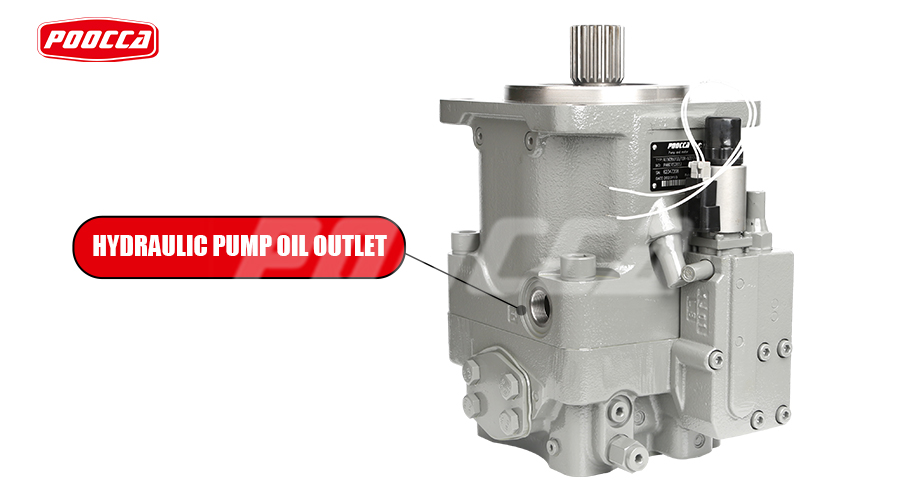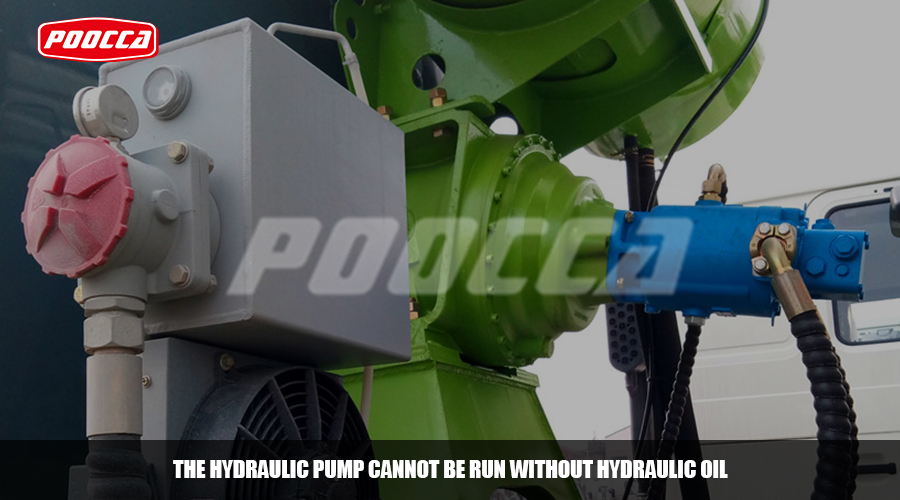In hydraulic systems, piston pumps are widely used because of their high efficiency, high pressure and strong reliability. But like all mechanical equipment, piston pumps have their own disadvantages.
Although it is often used in high-demand occasions such as industrial production and construction machinery, its biggest disadvantages are: high price and complex structure. Not only is the purchase cost high, but the subsequent maintenance is also troublesome and costly.
Poocca Hydraulic Manufacturer introduces how piston pumps work, what advantages it has, and its main disadvantages. Whether you are planning to choose a hydraulic pump for a new device or want to upgrade an existing hydraulic system, understanding these advantages and disadvantages can make a more appropriate purchasing decision.
What is a piston pump?
A piston pump is a positive displacement pump that pressurizes and delivers hydraulic oil through the reciprocating action of a one or more pistons. The pumps are able to run at very high pressures – typically up to 350 bar or more – and therefore they are well-suited to heavy-duty uses such as building equipment, industry presses and ship hydraulics.
There are two general types:
Axial piston pumps (e.g., swashplate designs)
Radial piston pumps
Each has its own advantages in terms of pressure, flow and control options.
Principal advantages of piston pumps
Before detailing the principal drawbacks of piston pumps, it is worth noting the reasons why people commonly choose piston pumps instead of gear or vane pumps:
High-pressure ratings: Typically rated for 280-400 bar continuous pressure.
High efficiency: Volumetric efficiency generally in excess of 90%, even under load.
Compact power: Smaller and more powerful than gear pumps.
Variable displacement options: Well-suited to energy-efficient load sensing use.
Precision control: Well-suited for closed-loop applications and servo controls.
With these advantages, piston pumps tend to be the “high-end” choice in hydraulic design.
Main disadvantages: cost and complexity
And now back to the basic question: What are the main disadvantages of hydraulic piston pumps in hydraulic systems?
The answer is more cost and mechanical complexity, meaning higher maintenance and cost of ownership in the long run.
a. High initial cost
Piston pumps are much more expensive than gear or vane pumps of similar displacement. This is because of:
Precision machining of pistons, cylinders and swash plates
Complex control mechanisms (e.g. pressure and flow compensators)
Use of high-strength alloys and specialized sealing systems
For example, a Rexroth A10VSO piston pump can cost 3-5 times as much as a comparable gear pump.
b. Complex maintenance
Unlike gear pumps, piston pumps involve many moving parts: pistons and shoes, valve plates, swash plates, bearings and seals.
Therefore, wear and failure points are increased, and maintenance usually requires disassembly by trained personnel in a cleanroom environment. Improper operation can cause: internal leakage, swash plate scoring, piston seizure, overheating or cavitation
c. Sensitivity to contamination
Another disadvantage is low contamination tolerance. Piston pumps have very small internal clearances – typically in the micrometer range. Even small amounts of dirt, water or metal shavings can cause: valve plate corrosion, premature wear of piston shoes, and reduced system pressure, which means that advanced filtration systems are required, which increases the total system cost.
d. Noise and vibration
Not the worst disadvantage, but some piston pumps are louder and vibrate more than other types of pumps, especially under variable loads or in difficult installation conditions.
When not to use a piston pump?
Knowing when not to use a piston pump will spare you from overdesign and overspending.
Scenario Consider alternatives
Low-pressure systems (<150 bar) Gear or vane pumps
Cost-sensitive applications Gear pumps (economical, rugged)
Contaminated or low-quality fluid systems Gear pumps (less contamination sensitive)
On-off circuits with simple fixed-displacement gear pumps
Small mobile equipment Micro gear or vane pumps
In these cases, the cost-benefit ratio of a piston pump is not ideal.
Alternatives to Piston Pumps
Here is a brief comparison:
Hydraulic Gear Pumps:
✅ Inexpensive
✅ Durable and resistant to dirty fluids
❌ Lower efficiency and pressure ratings
Hydraulic Vane Pumps:
✅ Quieter than gear pumps
✅ Moderately priced
❌ Lower pressure capacity than piston pumps
Hydraulic Screw Pumps:
✅ Great for continuous flow
✅ Low noise
❌ Requires high viscosity fluids
How to decide: Piston pump or not?
Before choosing a piston pump, think about the following questions:
What are the required pressures and flows?
How important is efficiency?
What maintenance infrastructure is available?
Are there any contamination issues?
What is the life cycle cost budget?
At Poocca Hydraulic Manufacturers, we offer free technical consultation to help customers choose the most cost-effective solution for their system – whether it is a piston pump, gear pump or a hybrid configuration.
The main disadvantages of piston pumps are their high cost and sensitivity, both in terms of purchase price and operational requirements. While it is unmatched in efficiency and pressure performance, these advantages also come with a trade-off of complexity and maintenance costs.
By understanding the advantages and limitations of piston pumps, system designers and procurement teams can make more informed, cost-effective decisions.
Frequently Asked Questions (FAQ)
1. Why are piston pumps more expensive than other types of hydraulic pumps?
Piston pumps require high-precision components such as pistons, valve plates, and swash plates. They are manufactured with more complex processes and tighter tolerances than gear or vane pumps. This results in higher production costs, which are also reflected in market prices.
2. Do piston pumps require special maintenance?
Yes. Due to their complex internal construction and contamination sensitivity, piston pumps usually require regular oil filtration checks, regular wear part checks, and on occasion disassembly and repair in cleanroom facilities. Lack of maintenance will cause premature failures.
3. What happens if the piston pump is run with contaminated or dirty fluid?
Piston pumps have very tight internal clearances and therefore are very susceptible to contamination of hydraulic fluid by dirt, water, or metal chips. Contamination can destroy valve plates, cylinder and piston boots, and can lead to internal leaks, pressure loss, or complete failure.
4. Is it recommended to use a plunger pump in a low-pressure application?
Not generally. In low-pressure systems of 150 bar or less, vane pumps or gear pumps are typically lower in cost and less maintenance intensive. High-pressure, precision control or variable displacement applications are best suited to piston pumps.
5. How long will a plunger pump last?
With proper maintenance and new hydraulic fluid, a quality plunger pump (such as Rexroth, Parker or Poocca) can last 5,000 to 10,000 hours or longer. Conversely, bad maintenance or hydraulic fluid contamination will shorten its service life significantly.
6. Will Poocca Hydraulics help me choose a proper pump for my system?
In fact. Poocca Hydraulics manufacturers include free technical consultancy and application-based guidance. Whether a plunger pump, gear pump or vane pump, we are able to guide you to balance performance and cost so that you experience smooth operation and cost savings in the long run.
Contact Poocca for the right pump solution
If you are uncertain whether a piston pump would be suitable for your hydraulic use, telephone Poocca Hydraulic Manufacturers. We have a large stock of plunger pumps, gear pumps, vane pumps and hydraulic motors, including Rexroth A10VSO, Parker PVP, Kawasaki K3V and our own range of Poocca pumps, to ensure that you receive the correct pump at the correct price and with full technical assistance.
Post time: Jun-27-2025






